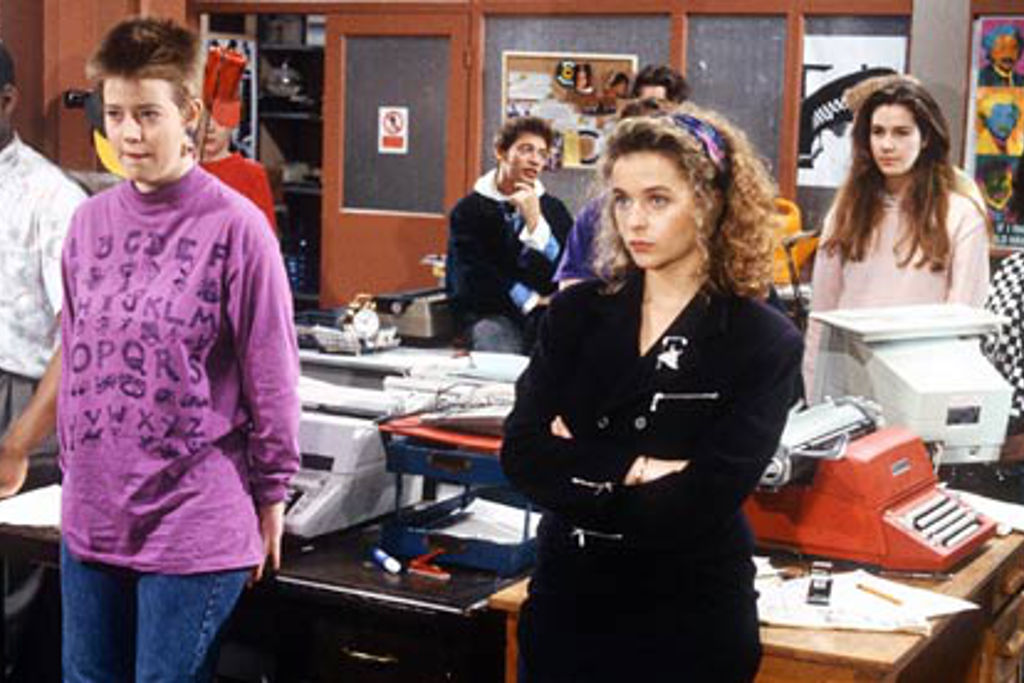What My Sydney Uni Media Students Actually Learned From Sharri Markson’s “Sting”
The Australian media editor's "undercover" operation at Sydney Uni taught this media lecturer's students invaluable lessons about how the media REALLY works.

The business of news has been beautifully illuminated for our first year media and communications students this semester. They have been in it, right at the centre of a media “event”: their own university course.
Australian media editor Sharri Markson went “undercover” in some of our journalism lectures — those by colleague Dr Penny O’Donnell and myself — and wrote about them on October 13 under the headline ’Uni degrees in indoctrination‘ (The Australian, October 13, 2014). The result of the undercover “sting” has been a stunning pedagogical success, energising the students and making them critically analyse the news with more enthusiasm than they had brought to our discussions of ISIL, ebola and Schudson’s six rules of journalism. It provided a unique position for the students to examine issues of ethics, political bias, journalistic distortion, the role of university education, what specifically it is that they are learning, and the power and reach of different forms of media. It also challenged them to think about their own capacities for critical thinking. Some of them bought a hardcopy newspaper for the first time. Others shared with friends methods to bypass the Australian paywall.
“Some of them bought a hardcopy newspaper for the first time. Others shared with friends methods to bypass the Australian paywall.”
In the first lecture of the course I had asked them all to sign up to Twitter by the following week (not to subscribe to crikey, as Markson reported), to observe its role in news – as a source and platform. By the end of the week, students understood exactly how Twitter worked, watching their own story swell, fragment and spread, and finally peter out. This week they could reflect with great clarity and insight the processes of news.
The students are a diverse cohort from various suburbs of Sydney as well as rural, interstate and overseas, and the Twitter conversations provided a neat snapshot of the political fault lines of public discussion in Australia and where the various media fit within it.
They saw that Twitter provided a platform to disagree with legacy media and they felt empowered, and uniquely qualified, to add their own voices to the public conversation.
Twitter led students to a story by graduates of University of Sydney and UTS media courses, which had some cheering in tutorials.
“The problem with Markson’s dig is it fails to acknowledge the critical environment that universities foster, and the intellectual capacities of the people who study there,” wrote Max Chalmers in crikey.
This seemed to encapsulate the dominant emotion of the students: anger at the assumption that they were so intellectually feeble as to be ripe for “brainwashing” and “indoctrination”. They don’t see themselves that way, nor is that their experience of what is going on in their classes. “Being taught to think critically is indoctrination?” said one student. “That’s nuts.” Some objected to the misrepresentation of lectures that they had attended and had trouble reconciling Markson’s distorted account with their own experiences.
One student thought a journalist coming incognito into their space was “creepy” while another thought it had merit and that university curriculum should be examined. Many thought Markson’s antics were laughable and shared parody photos that further spread via Twitter.

Image via Honi Soit
The discussions were wide-ranging and fascinating, demonstrating the critical capacities of the students, their differing worldviews, and their confidence in articulating them.
Former students and gen Y journalists leapt into the fray with astonishing speed, deriding Markson’s methods and ill-formed conclusions. The students followed as these popped up on the media spaces that they favour, such as Facebook, as well as Junkee and Birdee and university newspaper Honi Soit.
For the first year students of 2014, it provided the lived experience of being inside a media story that was loaded with ironies and insights that they can ponder and analyse for the rest of their degrees.
When they graduate I suspect it won’t be my scintillating lectures on false balance and active voice that they remember. It will be the week that they were the news.
–
Dr Bunty Avieson lectures in Journalism at the University of Sydney. She worked for 25 years as a journalist in Britain, Australia and Asia and was editor of Woman’s Day and New Idea. She has published three novels, a novella and two memoirs, which have been variously translated into Japanese, German and Thai, and been awarded two Ned Kelly Crime Writing Awards for crime fiction.
Read our takedown of Sharri Markson’s report here.